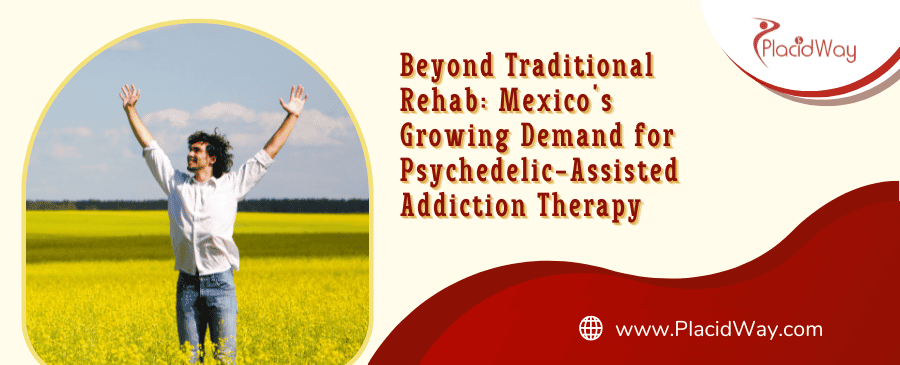
Feeling like you've hit a wall with traditional approaches to mental health or addiction? Are you searching for something different, a path that might offer profound shifts in perspective and healing? You're not alone. In recent years, there's been a growing buzz around psychedelic therapy, and Mexico has emerged as a significant destination for those seeking these unique treatments.
But what exactly is psychedelic therapy in Mexico, and why are people traveling there for it? It's about using substances like psilocybin (from magic mushrooms) or ibogaine in a carefully controlled and supportive setting, guided by trained professionals. This isn't about recreational use; it's a serious therapeutic approach aimed at deep healing and transformation. Let's explore what this involves, the potential benefits, the crucial safety considerations, and what you need to know if you're considering this path.
What Is Psychedelic-Assisted Addiction Therapy?
Psychedelic-assisted therapy involves using psychoactive substances under the guidance of licensed professionals to address deep-rooted psychological and emotional issues, often linked to addiction. In Mexico, this innovative treatment utilizes substances like psilocybin (magic mushrooms), Ayahuasca, and Ibogaine, enabling patients to confront the underlying causes of their addiction, often resulting in profound and lasting transformation.
Experience Ibogaine Treatment Center
What Exactly Do We Mean by Psychedelic Therapy?
Think of psychedelic therapy as a unique partnership. It combines the use of powerful, mind-altering substances with professional psychological support. The goal isn't just the experience itself, but using the altered state of consciousness these substances induce to work through difficult emotions, gain new insights, and break old patterns.
Here’s the key difference from recreational drug use:
- Setting: It happens in a safe, controlled environment, often a dedicated clinic or retreat center.
- Support: You are guided by trained facilitators or therapists before, during, and after the experience.
- Intention: The focus is purely on healing, growth, or addressing specific issues like depression, trauma, or addiction.
These substances temporarily change how your brain communicates, potentially allowing you to see problems from a completely new angle, access deeply buried emotions, or feel a profound sense of connection. The therapist helps you prepare for this, navigate the experience, and make sense of it afterward.
Why Are People Turning to Psychedelic Therapy in Mexico?
Mexico has become a focal point for psychedelic therapy for several compelling reasons. It's a combination of accessibility, cost, experienced practitioners, and a rich cultural history with plant medicines.
Accessibility and the Legal Landscape
In many Western countries like the US and Canada, substances like psilocybin and ibogaine are heavily restricted, making therapy legally inaccessible for most. Mexico often operates in a different context. While not universally legal, certain substances, particularly ibogaine for addiction therapy in Mexico, may exist in a legal grey area or be unregulated specifically for therapeutic use in clinical settings. Traditional use of psilocybin mushrooms in certain indigenous communities also creates a unique cultural backdrop, sometimes leading to more tolerance for its use in specific retreat contexts.
- Important Note: The legal status is complex and can change. It's crucial to understand the regulations and the risks involved. Operating centers may be licensed for general wellness but not explicitly for administering federally controlled substances in Mexico.
Potentially Lower Costs
While psychedelic therapy anywhere is a significant investment, options in Mexico can sometimes be more affordable than the very limited, high-cost research trials or emerging ketamine clinics in the US or Europe. However, quality treatment still requires substantial resources.
- Cost Considerations: Expect costs to vary widely based on the center, the substance used, the length of stay, and the level of medical/therapeutic support. For example, some sources indicate week-long ibogaine treatments can range from $6,000 to $8,000 or more, reflecting the intensive medical oversight required. Psilocybin retreats might have different pricing structures. Always get clear pricing upfront.
Experienced Practitioners
Particularly for ibogaine treatment, Mexico has centers that have been operating for many years, sometimes decades. This means some practitioners have accumulated significant hands-on experience in administering these treatments and managing patient safety, especially for challenging conditions like opioid addiction. This experience can be hard to find elsewhere due to legal restrictions.
Cultural Connection to Plant Medicines
Mexico has a long and rich history of using psychoactive plants in spiritual and healing ceremonies. Peyote cacti, psilocybin mushrooms ('teonanácatl' - "flesh of the gods" to the Aztecs), and other plants have been used for centuries. This deep cultural familiarity potentially fosters a more understanding environment for plant-based therapies compared to places where these substances are viewed primarily through a lens of prohibition.
Dedicated Retreat Environments
Many centers in Mexico are set up as retreats, offering an immersive experience away from the stresses of daily life. This allows participants to focus entirely on their healing journey in a supportive, often nature-oriented setting, which can be an important part of the therapeutic process.
What Types of Psychedelic Therapies Might You Find in Mexico?
Several different psychedelic substances are used in therapeutic contexts in Mexico, each with unique properties and applications.
Ibogaine Therapy
- What it is: A psychoactive substance derived from the Tabernanthe iboga plant native to West Africa.
- Primary Use: Most known for its potential to interrupt substance addiction, particularly opioids. Many users report significantly reduced withdrawal symptoms and cravings after treatment. It's also used for personal development and exploring deep-seated psychological patterns.
- The Experience: Often described as intense and dreamlike, involving life review and deep introspection. It typically lasts 12-24 hours or more.
- Important: Ibogaine carries significant physical risks, especially for the heart. Thorough medical screening (including EKG) and experienced medical supervision are absolutely essential. This is not a substance to be taken lightly.
Psilocybin Therapy
- What it is: The active compound in "magic mushrooms."
- Primary Use: Research (mostly outside Mexico) shows promise for treating depression, anxiety (especially end-of-life anxiety), PTSD, and OCD. It's also used for spiritual exploration and personal growth.
- The Experience: Induces altered perceptions, emotional release, and often profound feelings of interconnectedness or mystical experiences. Sessions typically last 4-6 hours.
- Context in Mexico: Often found in retreat settings, sometimes drawing on traditional ceremonial elements alongside modern therapeutic support.
5-MeO-DMT (Bufo Alvarius)
- What it is: A powerful, short-acting psychedelic found in the venom of the Sonoran Desert toad (Bufo Alvarius), native to Mexico and parts of the US.
- Primary Use: Sought for addressing depression, anxiety, trauma, and for inducing intense spiritual or ego-dissolution experiences.
- The Experience: Extremely rapid onset and intense effects, often described as merging with consciousness or experiencing a cosmic unity. The peak experience is short (15-30 minutes), but profound.
- Important: Due to its intensity, 5-MeO-DMT requires careful facilitation, screening for contraindications, and a safe setting.
Ayahuasca
- What it is: A psychoactive brew traditionally used by indigenous peoples in the Amazon Basin, made from the Banisteriopsis caapi vine and Psychotria viridis leaves.
- Primary Use: Used for physical and emotional healing, spiritual insight, and treating addiction or mental health issues.
- The Experience: Often involves intense visions, emotional purging (vomiting is common and seen as cleansing), and deep psychological processing. Ceremonies typically last several hours.
- Context in Mexico: While more common in South America, some centers or facilitators in Mexico may offer Ayahuasca ceremonies.
Ketamine Therapy
- What it is: A dissociative anesthetic that has psychoactive effects at lower doses.
- Primary Use: Legally used in clinical settings in many countries (including potentially Mexico) for treatment-resistant depression, anxiety, and PTSD.
- The Experience: Can create feelings of detachment from the body, altered perceptions, and introspection. Effects are shorter-acting than classic psychedelics.
- Context in Mexico: May be available in more conventional medical clinic settings compared to other psychedelics.
What Are the Potential Benefits People Hope For?
People seek Mexico psychedelic therapy for a variety of reasons, often after feeling let down by conventional treatments. While research is ongoing and individual results vary, potential benefits include:
Breakthroughs in Mental Health
- Depression & Anxiety: Studies, particularly with psilocybin, suggest significant and sometimes lasting reductions in symptoms of depression and anxiety, even in cases resistant to other treatments. Some research indicates psilocybin can produce substantial decreases in depression and anxiety for patients with life-threatening illnesses.
- PTSD: Psychedelics may help individuals process traumatic memories in a new way, reducing the emotional charge associated with them. Early research with MDMA (though not typically offered in these Mexican retreat contexts) shows significant promise, and anecdotal reports suggest other psychedelics might help some individuals.
New Hope for Addiction Recovery
- Interrupting Addiction: Ibogaine, in particular, is noted for its potential to drastically reduce or eliminate opioid withdrawal symptoms and cravings, offering a window for psychological healing and change. Some centers report high short-term detox success rates.
- Addressing Root Causes: Psychedelic experiences can provide insights into the underlying emotional pain or trauma driving addictive behaviors, facilitating deeper healing.
Personal Growth and Spiritual Well-being
-
Increased Self-Awareness: Gaining new perspectives on oneself, relationships, and life patterns.
-
Enhanced Connection: Feelings of unity with others, nature, or the universe are common and can be deeply meaningful.
-
Finding Meaning: Confronting existential questions and potentially finding a renewed sense of purpose or spirituality.
-
Statistic Insight: While large-scale data is still developing, preliminary studies and reports from established centers suggest high potential. For instance, some research points to psilocybin therapy leading to sustained antidepressant effects lasting months for some individuals.
Understanding the Risks and Safety: This is Crucial!
While potentially beneficial, psychedelic therapy is not without risks. It's essential to approach this path with eyes wide open and prioritize safety above all else.
Medical Risks
- Contraindications: Psychedelics can be dangerous for individuals with certain pre-existing conditions, especially cardiovascular problems (a major concern with Ibogaine) or a personal/family history of psychosis (schizophrenia, bipolar disorder).
- Medication Interactions: Many psychiatric medications (especially SSRIs and MAOIs) can interact dangerously with psychedelics. Proper tapering protocols under medical guidance are crucial but often complex.
- Importance of Screening: Thorough medical and psychological screening by qualified professionals before undergoing any psychedelic therapy is non-negotiable.
Psychological Risks
- Difficult Experiences ("Bad Trips"): Intense fear, paranoia, confusion, or overwhelming emotions can occur. While these can be therapeutically valuable with proper support, they can be destabilizing without it.
- Potential for Destabilization: In rare cases, psychedelics might trigger latent psychosis in vulnerable individuals or worsen existing mental health instability if not handled carefully.
- Need for Integration: The insights gained during a session can be jarring or difficult to integrate into daily life without proper follow-up support.
Legal and Ethical Concerns
- Legal Ambiguity: As mentioned, the legal status in Mexico can be unclear and subject to change. Participants might face legal risks, though enforcement often focuses on traffickers rather than individuals seeking treatment at established centers.
- Unregulated Providers: The growing interest attracts practitioners of varying quality. There's a risk of encountering untrained or unethical facilitators, inadequate medical support, or unsafe practices. Thorough vetting is critical.
How to Minimize Risks
- Do Your Homework: Research centers extensively. Look for transparency, experience, and clear safety protocols.
- Prioritize Medical Safety: Insist on thorough screening. Ask detailed questions about medical staff qualifications, availability during sessions, and emergency procedures.
- Ensure Psychological Support: Choose centers that offer preparation before the session and robust integration support afterward.
- Be Honest: Fully disclose your medical and psychological history, including all medications and substance use.
- Start Small (if applicable): If you're new to psychedelics, consider starting with lower doses or substances generally considered gentler (like psilocybin in a supportive setting) before exploring more intense options like Ibogaine or 5-MeO-DMT.
How Do You Find a Reputable Psychedelic Therapy Center in Mexico?
Choosing the right center is perhaps the most critical decision you'll make. Don't be swayed by fancy websites alone. Dig deeper.
Key Areas to Investigate:
- Credentials and Experience:
- Who are the facilitators, therapists, and medical staff? What specific training do they have in psychedelic therapy?
- How long has the center been operating? How many clients have they worked with?
- Do they have experience with your specific condition (e.g., opioid addiction, depression)?
- Screening and Safety Protocols:
- What does their medical and psychological screening process involve? Is it thorough?
- Is qualified medical personnel (doctor, nurse) present on-site during sessions, especially for substances like Ibogaine?
- What are their emergency procedures? What relationship do they have with local hospitals?
- Preparation and Integration:
- How do they help you prepare for the experience (intention setting, education)?
- What kind of support is offered after the sessions to help you integrate the experience? (This is vital!) Do they offer follow-up calls, connect you with integration therapists, or provide resources?
- Reviews and Testimonials:
- Look for independent reviews or testimonials beyond what's curated on their own website. Search forums, third-party review sites, or ask if they can connect you with past clients (respecting privacy).
- Transparency and Ethics:
- Are they open about their process, the risks involved, and the costs?
- Do they make overly grandiose claims or pressure you to sign up? (Red flag!)
- What are their ethical guidelines?
Questions to Ask a Potential Center:
- What specific substance(s) do you work with?
- What is your screening process like? What medical tests are required?
- Who will be facilitating my session? What are their qualifications and experience?
- Is medical staff present during the psychedelic experience? What are their qualifications?
- What happens if there is a medical or psychological emergency?
- What does your preparation process involve?
- What integration support do you offer after the retreat/session?
- What is the total cost, and what does it include?
- Can you share anonymized success/challenge stories relevant to my situation?
What Might a Psychedelic Therapy Experience Look Like?
While experiences vary greatly depending on the substance, center, and individual, a typical journey often involves three phases:
1. Preparation Phase (Days or Weeks Before)
- Consultations: Detailed discussions with the center's team about your history, intentions, and concerns.
- Screening: Medical evaluations (physical exams, EKG, blood tests, etc.) and psychological assessments.
- Education: Learning about the substance, what to expect, and how to navigate the experience.
- Intention Setting: Clarifying what you hope to gain or heal. This focus helps guide the experience.
2. The Psychedelic Session (The Experience Itself)
- Setting: A comfortable, safe, private space. Often involves lying down with eye shades and music selected to support the journey.
- Facilitation: One or more trained facilitators are present throughout, offering support and reassurance but generally allowing your inner experience to unfold. They intervene only if necessary for safety or grounding.
- Duration: Varies significantly: 4-6 hours for psilocybin, 12-24+ hours for ibogaine, only 15-60 minutes peak for 5-MeO-DMT, several hours for Ayahuasca.
- The Experience: Can range from blissful insights and emotional releases to challenging confrontations with difficult memories or patterns. Trust, surrender, and the facilitator's support are key.
3. Integration Phase (Days, Weeks, Months After)
- Initial Processing: Talking about the experience with therapists or facilitators shortly after it concludes.
- Ongoing Support: Follow-up therapy sessions (at the center or back home), group sharing, journaling, meditation, or other practices.
- Applying Insights: Working to translate the insights and new perspectives gained during the session into tangible changes in behavior, thinking, and relationships.
Imagine a psilocybin retreat: You might spend several days preparing with group discussions and intention setting. The session day involves taking the mushrooms in a calm space with facilitators nearby. Afterward, you'd have integration circles, perhaps some gentle bodywork or time in nature, helping you process and ground before returning home with a plan for continued integration.
Why Integration is Not Just an Afterthought, It's Essential
The psychedelic experience itself can be powerful, but the real work often begins after the session ends. Integration is the process of making sense of your experience and weaving the insights or emotional shifts into your everyday life. Without it, the benefits can fade, or the experience might even feel confusing or unsettling long-term.
Why It Matters:
- Makes Sense of Insights: Translates visions, feelings, or ideas from the non-ordinary state into meaningful understanding.
- Applies Lessons: Helps you figure out how to change behaviors, thought patterns, or relationships based on what you learned.
- Handles Challenges: Provides support for processing any difficult emotions or memories that surfaced.
- Sustains Benefits: Grounds the experience and helps the positive changes stick.
Forms of Integration Support:
- Integration Therapy/Coaching: Working with a professional trained in helping people process psychedelic experiences.
- Support Groups: Connecting with others who have had similar experiences.
- Personal Practices: Journaling, meditation, spending time in nature, creative expression.
- Lifestyle Changes: Implementing healthier habits related to diet, exercise, sleep, and relationships.
Choose a center that emphasizes and provides structured integration support. It's a sign they understand the whole process of healing.
Mexico Psychedelic Therapy: Understanding the Legal Nuances
It's crucial to touch upon the legal landscape again. While Mexico offers more accessibility than many places, it's not a free-for-all.
- Ibogaine: Often operates in a legally grey area, typically tolerated for therapeutic use in dedicated clinics, but not officially approved as a medicine. Centers usually require clients to sign waivers acknowledging the experimental nature and legal status.
- Psilocybin: Generally illegal under federal law, similar to the US. However, enforcement can be lax, especially regarding traditional use or established retreat centers operating discreetly, often under wellness or spiritual retreat licenses. Risk still exists.
- Other Substances (5-MeO-DMT, Ayahuasca): Legality can be similarly complex and ambiguous. 5-MeO-DMT from toad secretions might be viewed differently than synthetic versions. Ayahuasca's legality often depends on DMT's status.
- Disclaimer: Laws can change and vary by region. Enforcement priorities can shift. Traveling for these therapies carries inherent legal risks that participants must weigh. Always research the current situation and consult with knowledgeable sources if possible. This information is not legal advice.
Frequently Asked Questions (FAQs)
Q: Is psychedelic therapy actually legal in Mexico?
A: It's complicated. Some substances like Ibogaine often exist in a legal grey zone, tolerated for therapeutic use in specific clinics but not formally approved. Psilocybin is generally illegal under federal law, but enforcement varies, and some retreats operate, often under wellness licenses. The legal status can be ambiguous and change, so there are risks involved. It's definitely not openly legal across the board like a standard medical procedure.
Q: How much does psychedelic therapy cost in Mexico?
A: Costs vary a lot! It depends on the substance, the center's location and amenities, the length of stay, and the level of support. As an example, intensive Ibogaine treatments lasting a week or more can cost from $6,000 to $8,000 or higher. Psilocybin retreats might range from $1,500 to $5,000+ for several days. Shorter sessions or different substances will have different price points. Always get a clear breakdown of costs upfront.
Q: Is psychedelic therapy safe?
A: It can be done safely, but only under the right conditions. Safety depends heavily on thorough medical and psychological screening beforehand, expert facilitation during the session, qualified medical support on hand (especially for Ibogaine), and good integration support afterward. Choosing a reputable, experienced center with strong safety protocols is essential to minimize the inherent medical and psychological risks. It's definitely not risk-free.
Q: What conditions can psychedelic therapy potentially help with?
A: People seek psychedelic therapy for various issues. Research and anecdotal reports suggest potential for treating difficult conditions like treatment-resistant depression, PTSD, anxiety disorders (including end-of-life anxiety), OCD, and substance addictions (especially opioid addiction with Ibogaine). Many also use it for personal development, spiritual growth, and increasing self-awareness.
Q: How long do the effects of psychedelic therapy last?
A: The immediate effects of the substance last hours (psilocybin, ayahuasca) to a day or more (ibogaine). However, the therapeutic effects – the shifts in perspective, mood, or behavior – can potentially last much longer, from weeks to months, or even lead to permanent changes for some. Lasting benefits strongly depend on proper integration work after the session to solidify the insights gained.
Q: Do I really need a guide or therapist during the session?
A: Yes, absolutely. Trying these powerful substances alone, especially for therapeutic purposes, is strongly discouraged and can be unsafe. A trained guide or therapist provides crucial support: ensuring physical and emotional safety, helping you navigate challenging moments, and assisting with making sense of the experience afterward. Their presence is a key part of what makes it therapy rather than just drug use.
Q: What's the main difference between Ibogaine and Psilocybin therapy?
A: Ibogaine is primarily known for its potential to interrupt physical addiction, especially opioids, by significantly reducing withdrawal and cravings. The experience is often very intense, introspective, and long-lasting (12-24+ hours). Psilocybin (from mushrooms) is more commonly used for mental health conditions like depression and anxiety, and for spiritual exploration. Its effects are generally shorter (4-6 hours) and often characterized by altered perceptions and emotional release. Both require careful screening and support, but Ibogaine typically involves more intensive medical monitoring due to heart risks.
Ready to Explore Healing Journeys in Mexico?
Psychedelic therapy in Mexico offers a potential path for those seeking profound change, especially when other methods haven't worked. From the addiction-interrupting potential of Ibogaine to the perspective-shifting insights of Psilocybin, these therapies hold promise.
However, this journey requires careful consideration. Prioritizing safety, thoroughly researching centers, understanding the risks and legal nuances, and committing to integration are absolutely essential steps. It's not a magic bullet, but for some, it can be a powerful catalyst for healing and growth.
Ready to learn more about potential options for psychedelic therapy in Mexico? PlacidWay can help you connect with information and resources. Contact PlacidWay today to explore possibilities safely and confidentially!
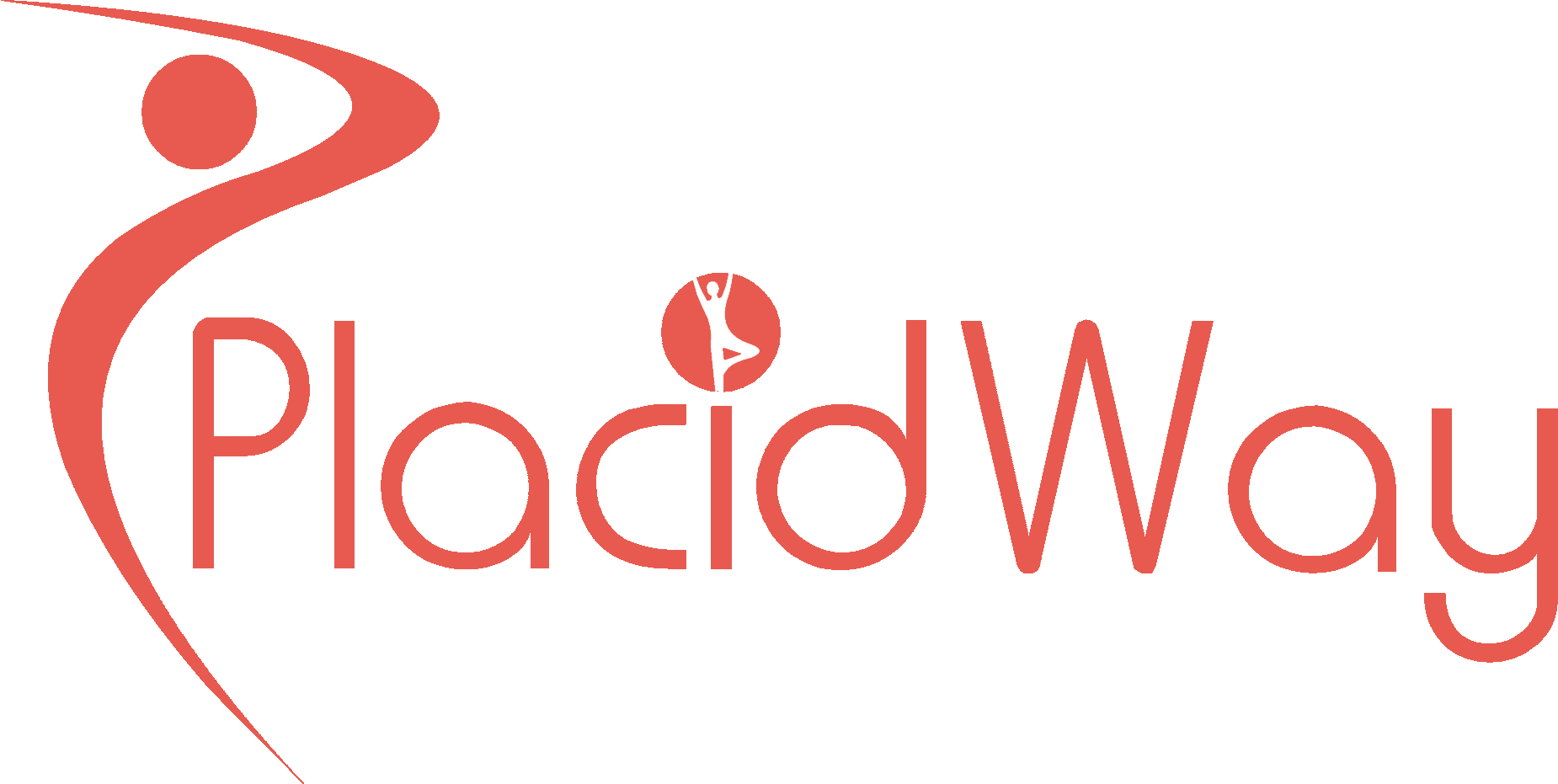

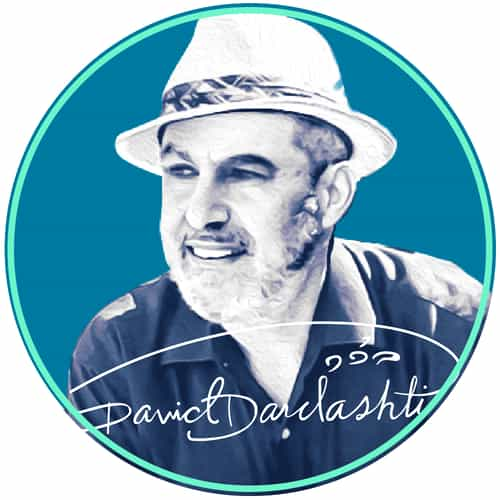
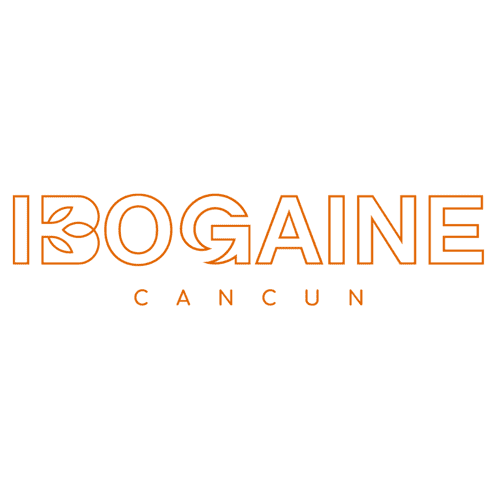
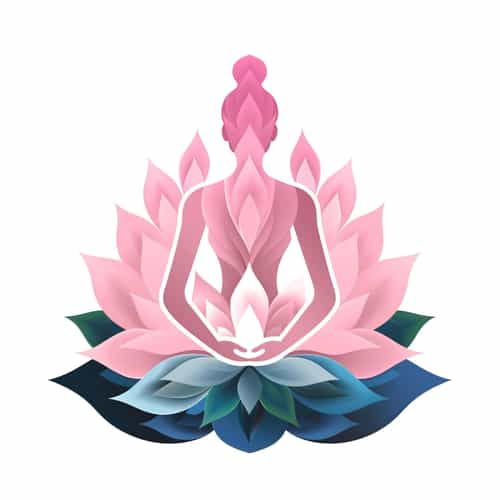



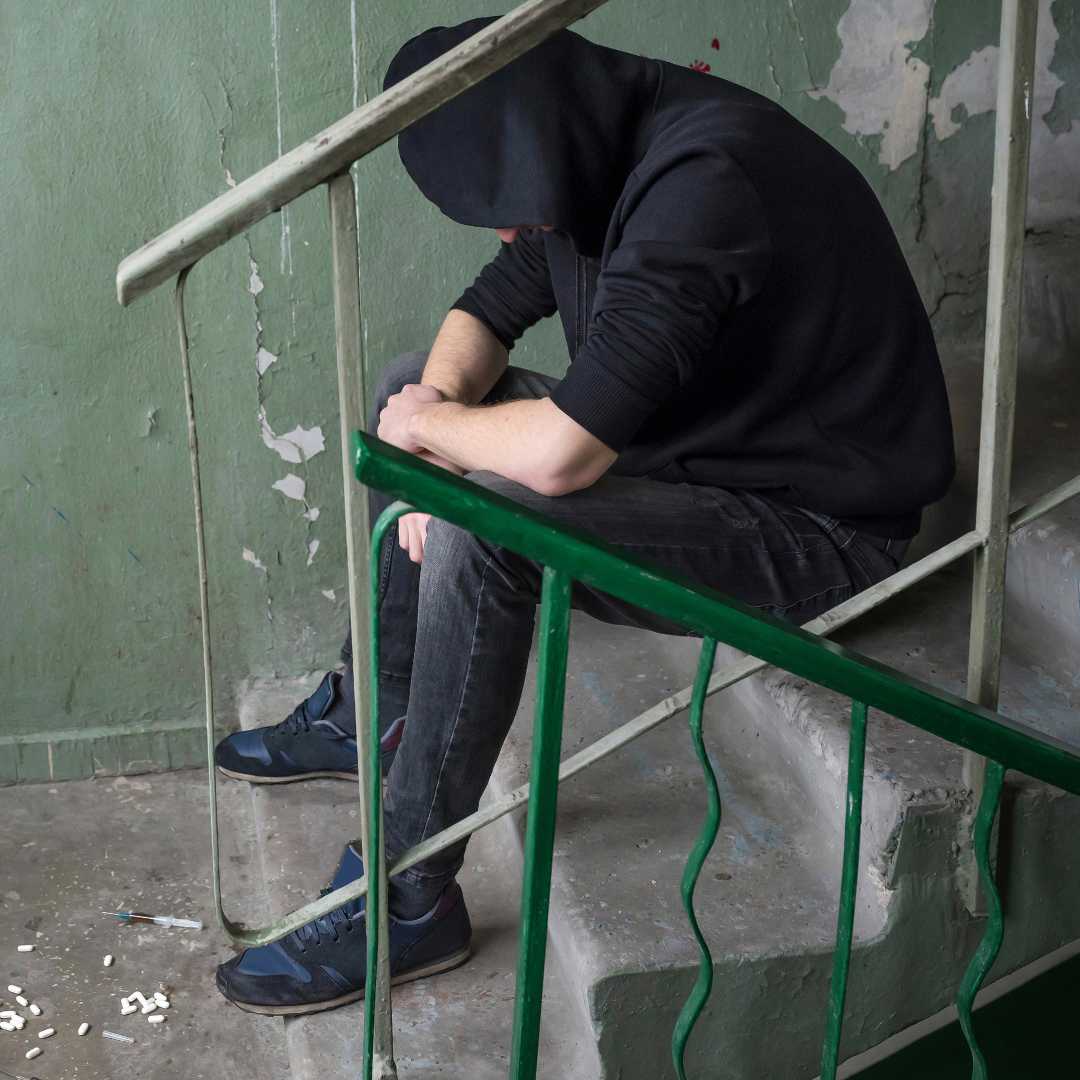










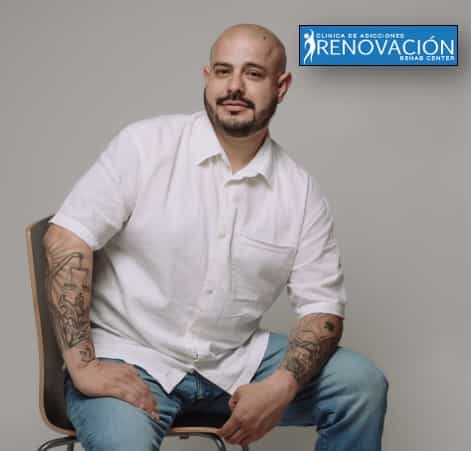

Share this listing